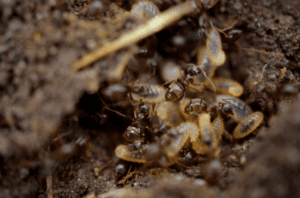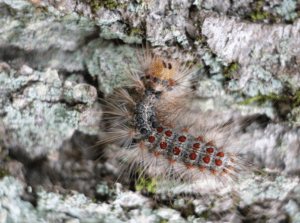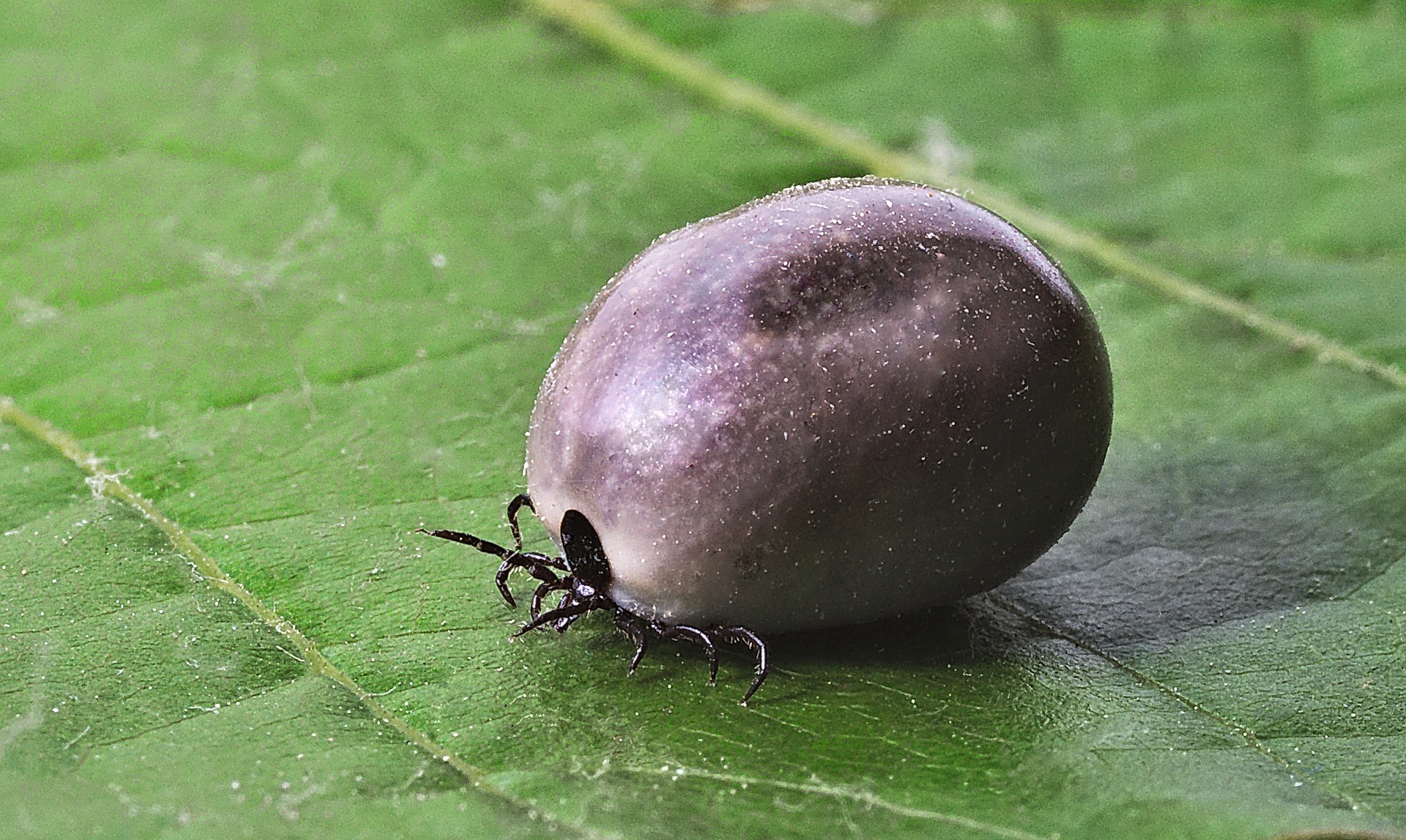
Are ticks dangerous? Let’s be honest - these little critters are a bit creepy. But did you know they can actually cause an allergy to red meat? It’s true! Read on to learn more about ticks, their prevention, and the weird afflictions they can cause.
The Life of a Tick
There are two main kinds of ticks: hard and soft. As their title suggests, soft ticks have soft, wrinkly bodies. Male and female soft ticks are very similar in size. Hard ticks are more common than soft ticks and have hard bodies. Female hard ticks are usually somewhat larger than males, especially after a meal. The life cycle of a hard tick differs slightly from that of a soft tick, specifically during the nymph stage. Before we talk about nymphs, though, let’s start at the beginning of a tick’s life: the egg.
Tick eggs can usually be found attached to a leaf, a blade of grass, or in a soft patch of soil. They are laid in clusters called tick nests. The clusters are about an inch in diameter and the eggs are a translucent brown or red color. The length of time tick eggs take to hatch can range from 9 days to 2 months. Eggs hatch into larvae, or seed ticks. A newly hatched tick larva is less than 2mm in size with six legs. Tick larvae start searching for a host very shortly after hatching. They need a blood meal to survive and to molt. Blood contains nutrients that are essential to a tick’s development and, later in life, reproductive abilities. After hatching, larvae can usually survive for around one month without a meal, but some can live for as long as 170 days.
After tick larvae have had a blood meal, they molt into nymphs. Nymphs are also less than 2mm in size but they have eight legs. Here is where the life cycles of hard and soft ticks differ: hard ticks go through one nymphal stage while soft ticks develop through more than one. Soft ticks grow little by little, molting several times until they are adults. With hard ticks, the change from nymph to adult is much less gradual, only requiring a single molt.
Once they have matured into adults, both hard and soft ticks will set out in search of their final blood meal. Though they cannot develop any further, both male and female adult ticks require the nutrients in blood to reproduce. Female ticks drink enough blood to become engorged. Males take a smaller blood meal than females and they will not become engorged. Once they have had a meal, female ticks set out in search of a mate- preferably one on the same host as themselves. Ticks usually mate while they are still on their host’s body. Afterwards, the female drops off of the host and finds a safe place to lay her eggs. Male ticks typically mate with one or two females before dying. All together, a tick’s entire life cycle can take between two months and three years to complete.
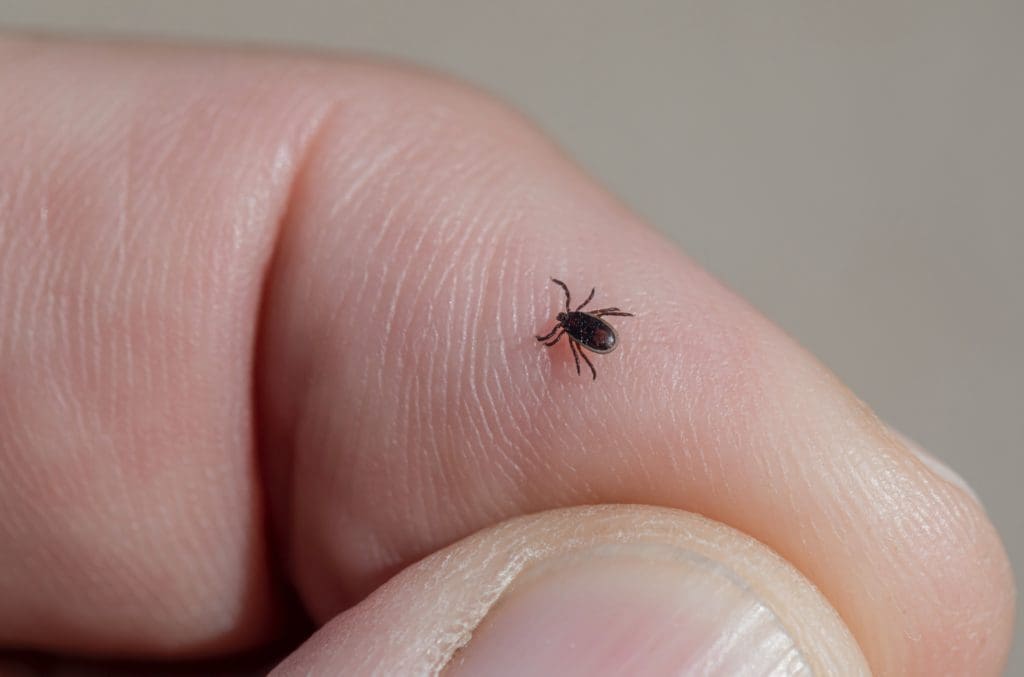
Dangers Posed by Ticks
Ticks can be dangerous pests as they are able to carry and transmit a number of bacteria, parasites, viruses, and other medical maladies. Some of the more common afflictions caused by ticks are Lyme disease, babesiosis, anaplasmosis, and Rocky Mountain Spotted Fever or RMSF. Some ticks can also cause temporary paralysis, primarily in pets and children, if they attach too close to the spinal column. One species of tick, known as the lone star tick, can cause a strange affliction called Alpha-gal syndrome.
Alpha-gal Syndrome
Alpha-gal syndrome is caused exclusively by lone star ticks. This species was previously most common in southern parts of the United States. In recent years, however, they have migrated more north and can be found in many northeastern states. Female lone star ticks have a single white dot on their backs, which is where the species gets its name. Lone star ticks are able to transmit a number of maladies, perhaps the strangest of which is the allergy called Alpha-gal syndrome. Alpha-gal syndrome can only affect humans and, as mentioned, is an allergy- not an illness. Alpha-gal is the name of a sugar molecule that occurs naturally in most mammals but does not exist in birds, fish, reptiles, or humans. When Alpha-gal is transmitted to a human from a tick, the human host’s antibodies attack the molecule and cause an allergic reaction. After a human receives the Alpha-gal molecule, they will have an allergic reaction any time they consume the molecule. Unfortunately, Alpha-gal is present in many mammal by-products like beef, lamb, pork, rabbit, venison, milk, milk products, and gelatin. In other words, anyone who is afflicted with Alpha-gal syndrome has a life-long allergy to red meat and possibly other mammal by-products. Alpha-gal syndrome cannot be cured, but it can be managed by avoiding any products that cause an allergic reaction. Symptoms of Alpha-gal syndrome will occur after ingesting any of the previously mentioned products and may present as hives, headaches, swelling, and anaphylaxis.
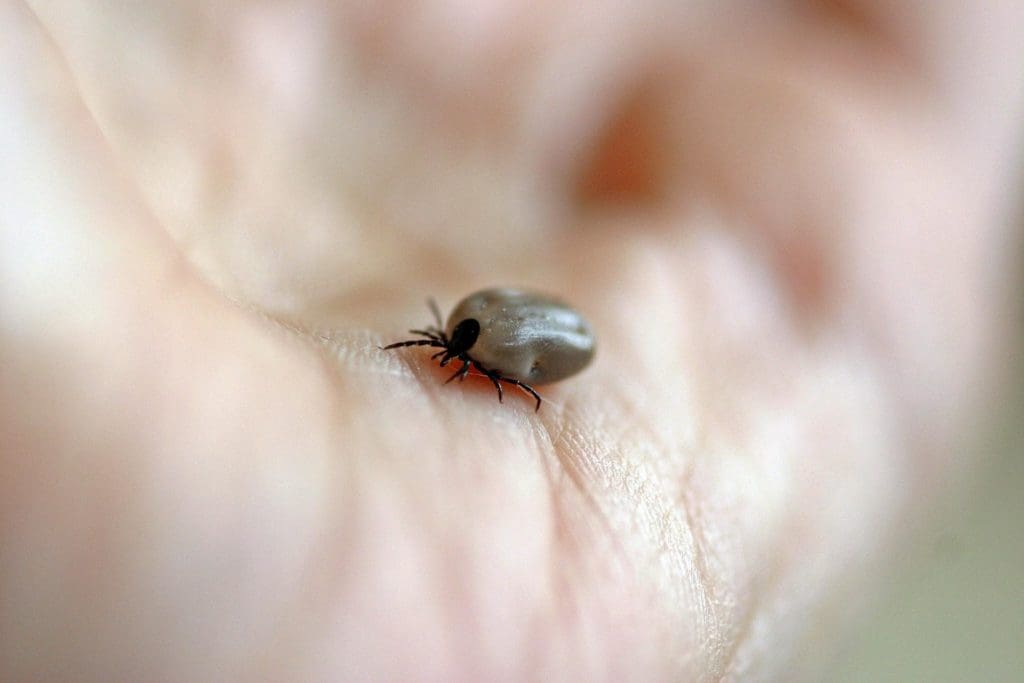
Removing an Attached Tick
Alternative tick removal methods are almost never effective and some are rather dangerous. Smothering a tick won’t work since most ticks can survive long periods without air. Methods like burning ticks off are not nearly effective enough to be worth the danger. So, you might be asking yourself “how exactly is a tick supposed to be removed”? Well, with tweezers! Yep, that’s right- good old fashioned tweezers are the best tool for a tick-removal job. Use your tweezers to pinch the attached tick as close to the host’s skin as possible. Pull the tick straight outwards and avoid twisting. If you’re lucky, the entire tick will come out. However, the head of the tick may detach and remain embedded in the host’s skin. When this happens, the tick is completely dead and cannot transmit any diseases or other maladies. The head may cause some irritation to the skin but it will not typically cause problems beyond that. It will eventually fall out on its own.
Preventing Tick Bites
A great way to spot ticks before they attach to you is to wear light-colored clothing when you are in tick-heavy areas. Here are some other ways to prevent tick bites on you and your family:
- Treat all of your clothing and gear (backpacks, tents, tarps, etc.) with permethrin, or use gear that has been pre-treated.
- When outdoors, especially in wooded or grassy areas, try to wear long pants, a long sleeve shirt, and tall socks. If your socks are tall enough, tuck the bottoms of your pants into them.
- After spending time outdoors, shower and check your entire body for attached ticks. Check your family and pets as well. Ticks are partial to hairy and protected areas like the scalp, armpits, and groin. Nymphs can transmit afflictions just as easily as adults but are much more difficult to detect. If you have spent time in a heavily-infested area, it is a good idea to check yourself and your family multiple days in a row to make sure you did not miss any hiding ticks. Ticks generally need to be attached to a host for more than 24 hours before they can transmit any ailments, but they are adept at hiding so be diligent in your searches.
Seeing a few too many ticks in your backyard? Give Twin-boro a call today and we’ll send a technician over to give you a free estimate right away.





